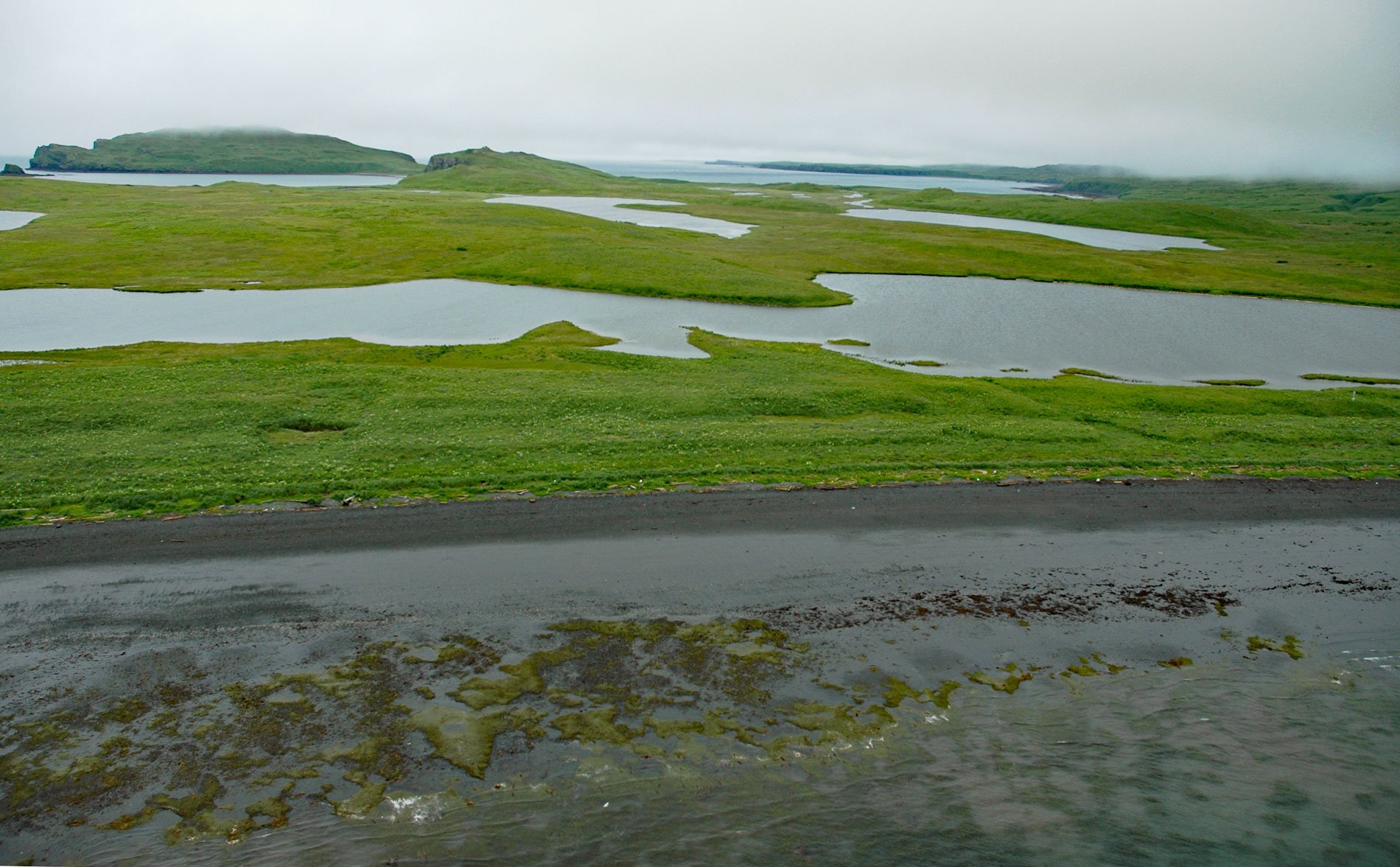Kaguyak is an abandoned Alutiiq village on the Aliulik Peninsula on the southeastern coast of Kodiak Island at the head of Kaguyak Bay, about 165 miles (266 km) southeast of King Salmon and 81 miles (131 km) southwest of the city of Kodiak, Alaska. In 1849, the Russian American Company called this place “Aleutsk Selen Kaniyagmyut,” meaning “Aleut village of Kaniyagmyut”. In 1868, the U.S. Coast and Geodetic Survey recorded the village name as “Alsentia”. In 1880, it was reported as “Kaguiak” by Ivan Petrof. In 1903, the Russian Orthodox priest Tikhon Shalamov visited and described the village of Kaguyak as having about twenty houses, with no more than one hundred villagers. The village was located by a lake on a low sandy shore of a deep bay with tall mountains that provided some protection from winter storms and winds.
Prehistoric people lived in Kaguyak Bay for millennia and were among the first Kodiak Islanders to encounter Russian fur traders. However, the historic village of Kaguyak developed in the 1860s when people were displaced from the nearby village of Old Kaguyak by a smallpox epidemic. The nineteenth-century village was large, with about 200 residents, many homes, and several stores. Here, residents enjoyed an abundance of salmon, ducks, and ptarmigan. Kaguyak was also the location of an Alaskan Commercial Company trading post managed by Mr. Woche and became a destination for Alutiiq hunters who traveled to the village to trade their furs for food, tools, and household supplies. Kaguyak’s population declined with the decimation of the sea otter population. By the early twentieth century, the village had less than one hundred residents. In 1964, only thirty-four people lived in the community.
The earthquake of March 27, 1964, generated a series of at least four tsunamis that virtually destroyed the village. Most of the residents escaped by climbing the hill south of the village after the first wave struck. Successive waves of 30 to 50 feet (9-15 m) swept most of the buildings into the lake. In between waves, village men attempted to salvage supplies from houses and move skiffs and boats to safety. During the chaos, Nick Zeedar and the village chief, Simmie Alexandroff, drowned. A visiting geologist, who happened to be hiking in the vicinity, also died that day. Following the destruction, the remaining residents of Kaguyak temporarily relocated to Anchorage and then Kodiak, before settling permanently in the neighboring communities of Old Harbor and Akhiok where many had family ties. However, Kaguyak has not been forgotten and is still used as a seasonal fish camp. Kaguyak Village is a federally recognized tribe, and following the passage of the Alaska Native Claims Settlement Act of 1971, the Akhiok-Kaguyak village corporation represents the Alutiiq people of southern Kodiak Island. Read more here and here. Explore more of Kaguyak Bay here:

